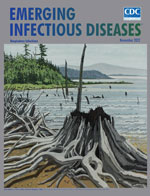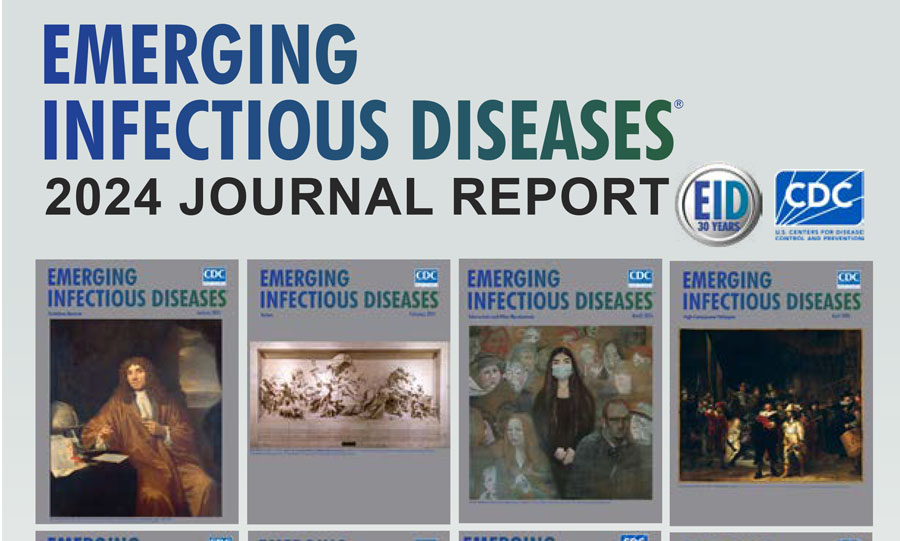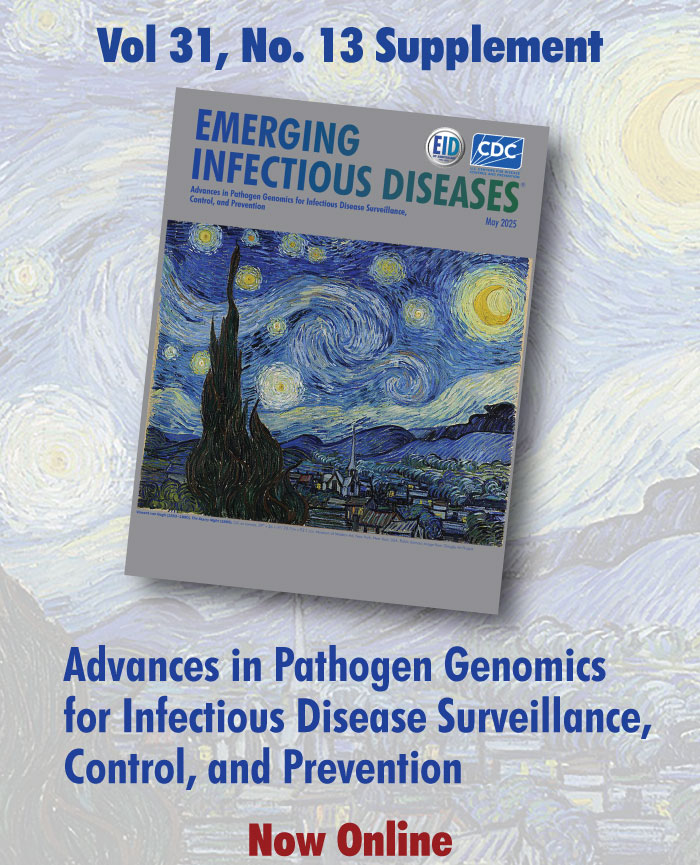Online Reports
Volume 28—2022
Volume 28, Number 11—November 2022

Increased Detection of Carbapenemase-Producing Enterobacterales Bacteria in Latin America and the Caribbean during the COVID-19 Pandemic
During 2020–2021, countries in Latin America and the Caribbean reported clinical emergence of carbapenemase-producing Enterobacterales that had not been previously characterized locally, increased prevalence of carbapenemases that had previously been detected, and co-production of multiple carbapenemases in some isolates. These increases were likely fueled by changes related to the COVID-19 pandemic, including empirical antibiotic use for potential COVID-19–related bacterial infections and healthcare limitations resulting from the rapid rise in COVID-19 cases. Strengthening antimicrobial resistance surveillance, epidemiologic research, and infection prevention and control programs and antimicrobial stewardship in clinical settings can help prevent emergence and transmission of carbapenemase-producing Enterobacterales.
| EID | Thomas G, Corso A, Pasterán F, Shal J, Sosa A, Pillonetto M, et al. Increased Detection of Carbapenemase-Producing Enterobacterales Bacteria in Latin America and the Caribbean during the COVID-19 Pandemic. Emerg Infect Dis. 2022;28(11):1-8. https://doi.org/10.3201/eid2811.220415 |
|---|---|
| AMA | Thomas G, Corso A, Pasterán F, et al. Increased Detection of Carbapenemase-Producing Enterobacterales Bacteria in Latin America and the Caribbean during the COVID-19 Pandemic. Emerging Infectious Diseases. 2022;28(11):1-8. doi:10.3201/eid2811.220415. |
| APA | Thomas, G., Corso, A., Pasterán, F., Shal, J., Sosa, A., Pillonetto, M....Melano, R. (2022). Increased Detection of Carbapenemase-Producing Enterobacterales Bacteria in Latin America and the Caribbean during the COVID-19 Pandemic. Emerging Infectious Diseases, 28(11), 1-8. https://doi.org/10.3201/eid2811.220415. |
Volume 28, Number 8—August 2022

Since Mycoplasma genitalium was identified 40 years ago, much of the epidemiology has been described, diagnostic tests have been developed and approved, and recommended treatment approaches have been identified. However, the natural history remains incompletely understood, and antimicrobial resistance has rapidly increased. This review summarizes evidence published since the US Centers for Disease Control and Prevention 2015 Sexually Transmitted Diseases Treatment Guidelines. Data on sequelae remain insufficient, macrolide resistance is common, and fluoroquinolone resistance is increasing. Potential benefits of testing and treatment include resolving symptoms, interrupting transmission, and preventing sequelae. Potential harms include cost, patient anxiety, and increasing antimicrobial resistance.
| EID | Manhart LE, Geisler WM, Bradshaw CS, Jensen JS, Martin DH. Weighing Potential Benefits and Harms of Mycoplasma genitalium Testing and Treatment Approaches. Emerg Infect Dis. 2022;28(8):1-11. https://doi.org/10.3201/eid2808.220094 |
|---|---|
| AMA | Manhart LE, Geisler WM, Bradshaw CS, et al. Weighing Potential Benefits and Harms of Mycoplasma genitalium Testing and Treatment Approaches. Emerging Infectious Diseases. 2022;28(8):1-11. doi:10.3201/eid2808.220094. |
| APA | Manhart, L. E., Geisler, W. M., Bradshaw, C. S., Jensen, J. S., & Martin, D. H. (2022). Weighing Potential Benefits and Harms of Mycoplasma genitalium Testing and Treatment Approaches. Emerging Infectious Diseases, 28(8), 1-11. https://doi.org/10.3201/eid2808.220094. |




